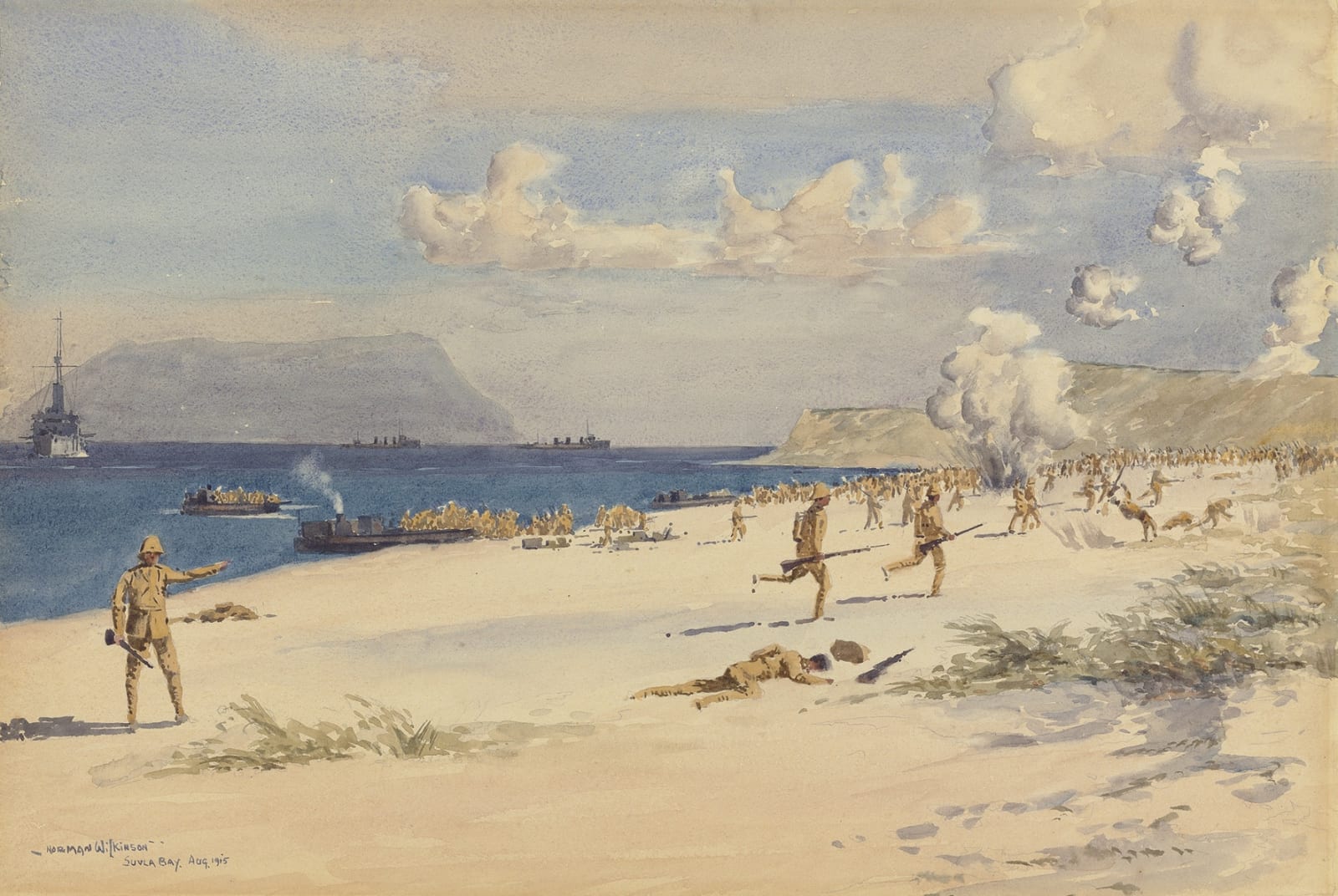Norman Wilkinson, CBE, SMA, PRWS, RI British, 1878-1971
Provenance
with The Fine Art Society, London.
Following the failed Allied naval attack on the Dardanelles Strait in March 1915 and subsequent large-scale land invasion which had begun in April, the Suvla Bay landings were organised as part of an ‘August Offensive’ against Turkish and German forces, intended to break the continued deadlock on the Gallipoli Peninsula. Mediterranean Commander-in-Chief Sir Ian Hamilton planned for the landings to simultaneously support a push to the Sari Bair ridge by Australian and New Zealand troops from Anzac Cove, just south of Suvla Bay on the Aegean coastline. An additional attack from the Allied beachhead at Helles, on the southern tip of the peninsula, was also planned.
Under the command of Sir Frederick Stopford, the Suvla Bay landings took place from 10pm on 6th August, with 20,000 troops of the newly formed British IX Corps (comprising of 10th (Irish) and 11th (Northern) Divisions) landing at predesignated ‘A’, ‘B’ and ‘C’ beaches in the bay. After the remaining troops successfully landed the following morning, the immediate vicinity was secured but confused and delayed orders from Stopford to advance further, allowed time for Turkish reinforcements to arrive. It was not until the morning of 9th August that the British advance gathered momentum, by which time Turkish soldiers had taken the high ground above the Allied troops, and any chance to regain the upper-hand had disappeared, before trench warfare once again ensued. After the failure of the operation, together with those at Anzac Cove and Helles, General Stopford was relieved of his command on 15th August and questions were raised why a general close to retirement, with no previous battle experience, had been placed in charge.
During the Gallipoli Campaign Norman Wilkinson served with the Royal Naval Volunteer Reserve and later published a book documenting his time there - The Dardanelles, colour sketches from Gallipoli. This included several works relating to Suvla Bay and whilst he did not land, he closely observed events from the Admiral’s temporary flagship HMS Chatham. In this watercolour, thought to be a more finished version of the illustration in the book ‘Troops landing at “C” Beach, August 7’, Wilkinson notes ‘These troops were supporting the night-landing previously effected. A number of casualties were caused by bombs dropped from a hostile aeroplane and by Turkish shells’. This is brutally conveyed in the work, as a soldier lies face-down in the sand amid exploding shells in the distance. An oil painting by Wilkinson closely resembling this work is in the Imperial War Museum collection and was one of six Dardanelles works based on the 1915 sketches commissioned by the museum soon after the war.
